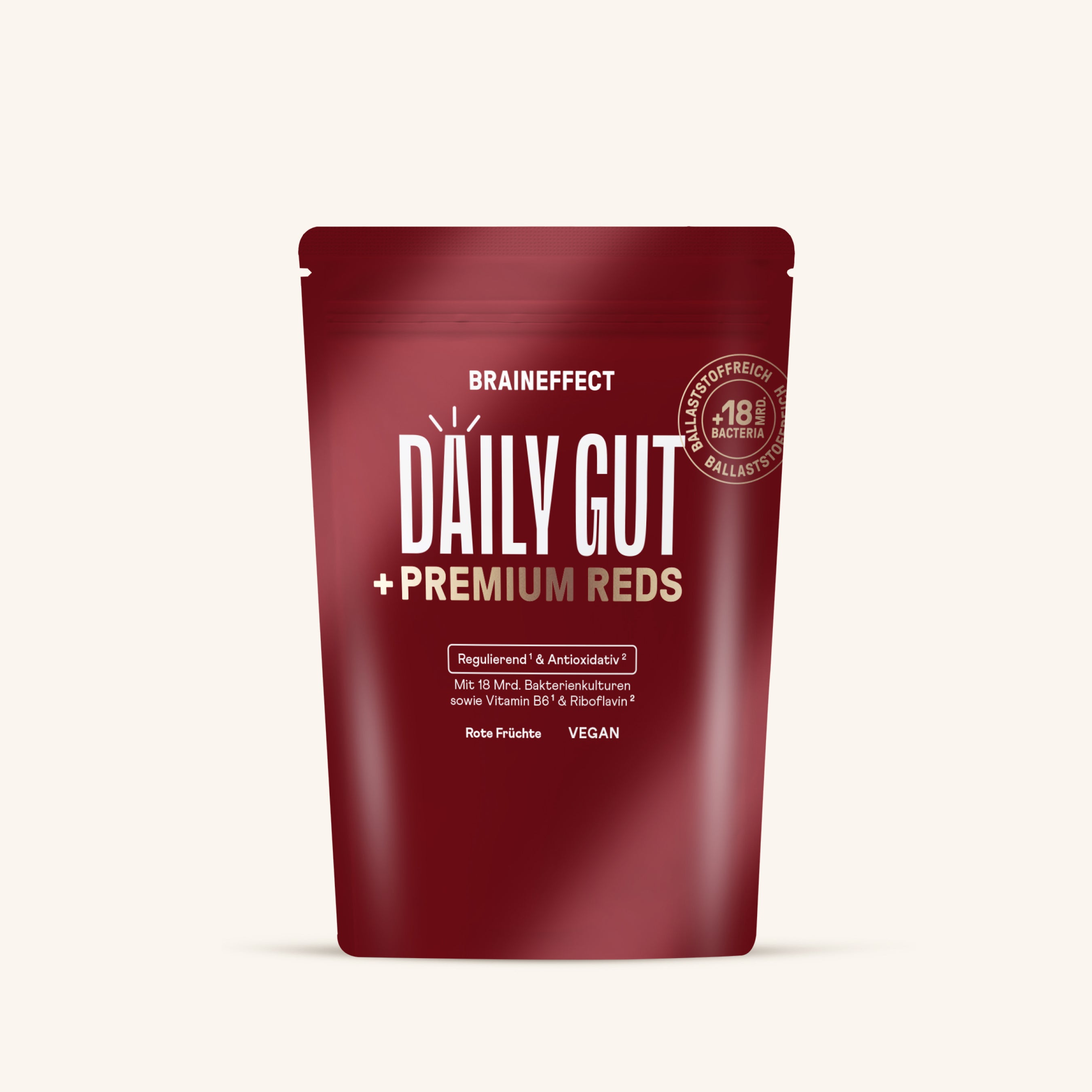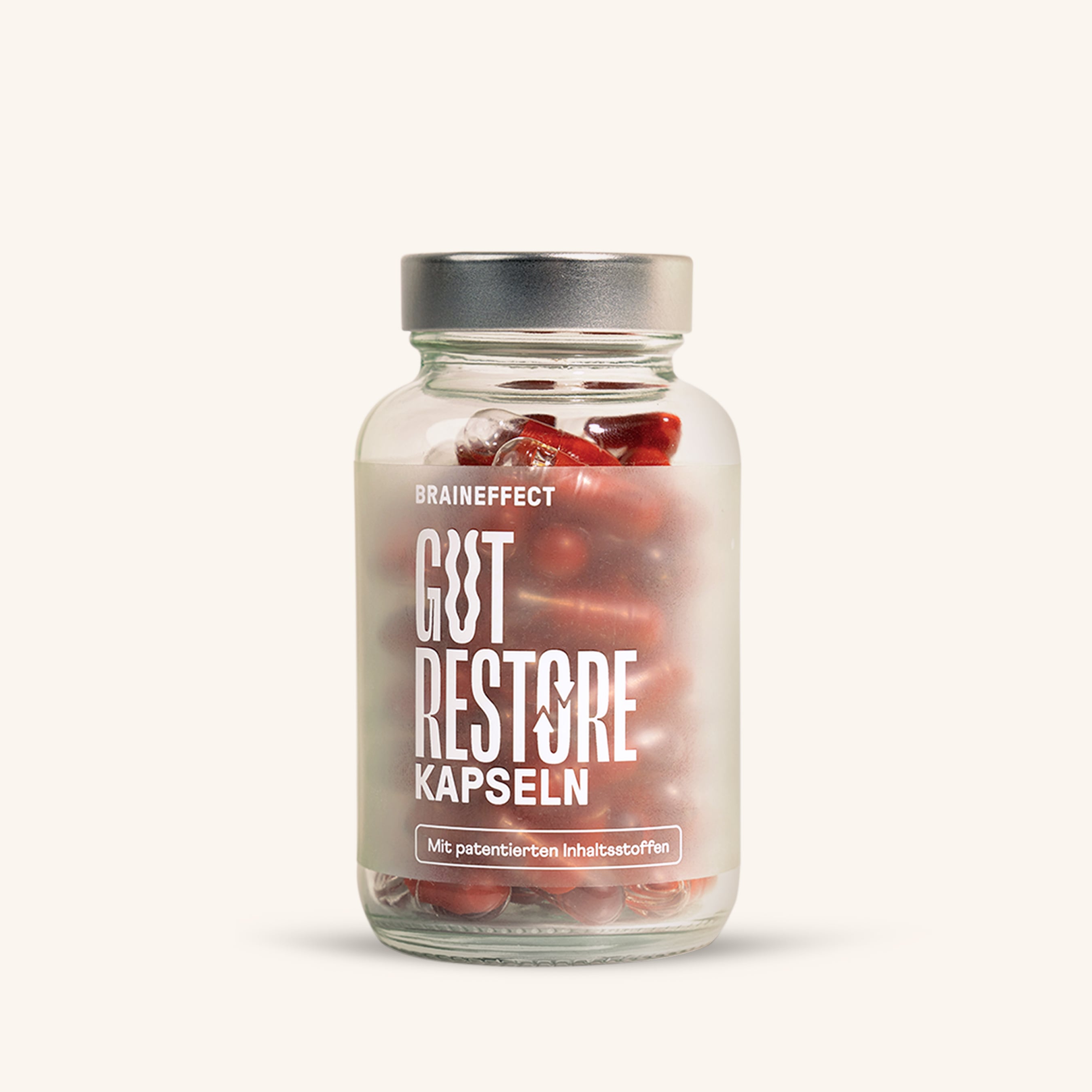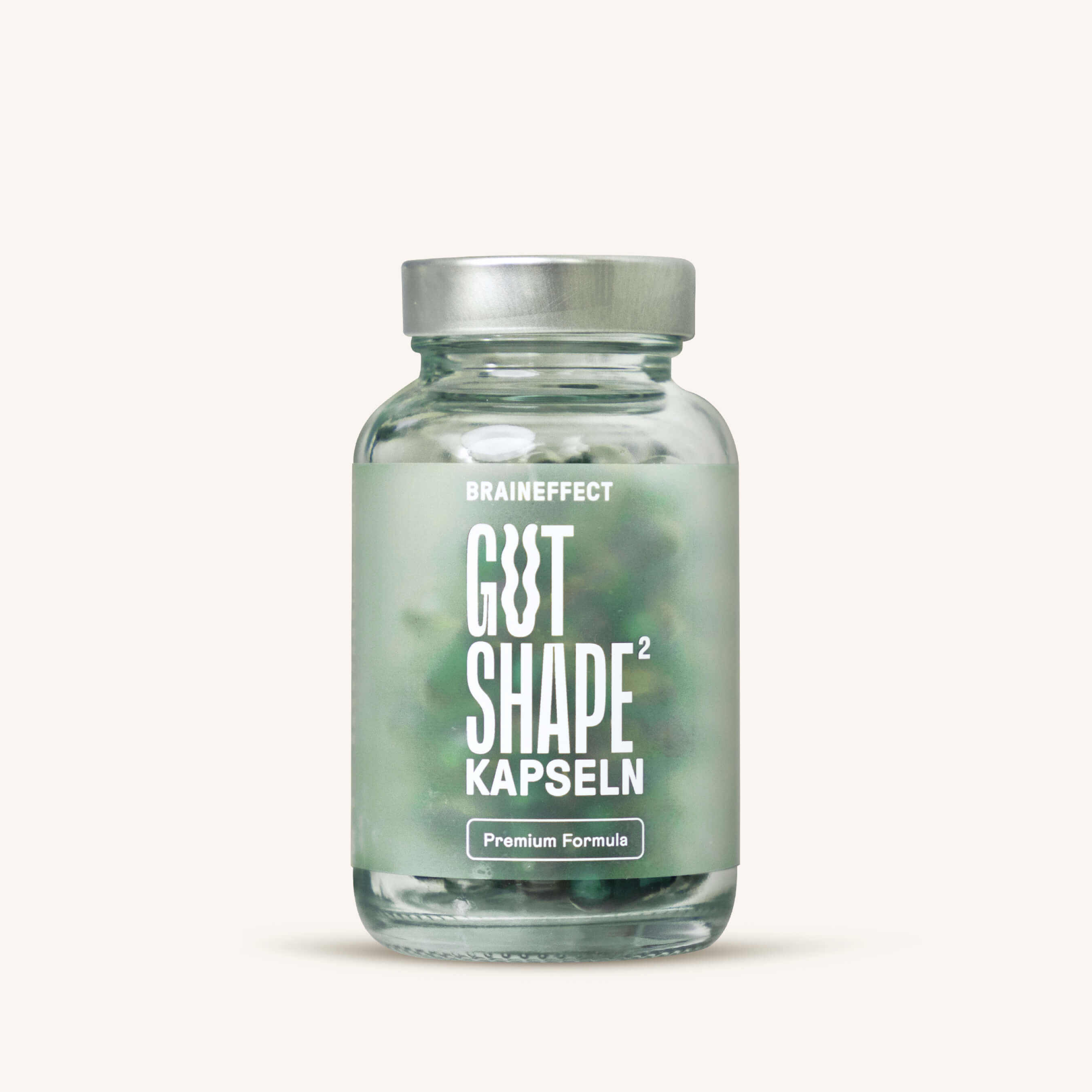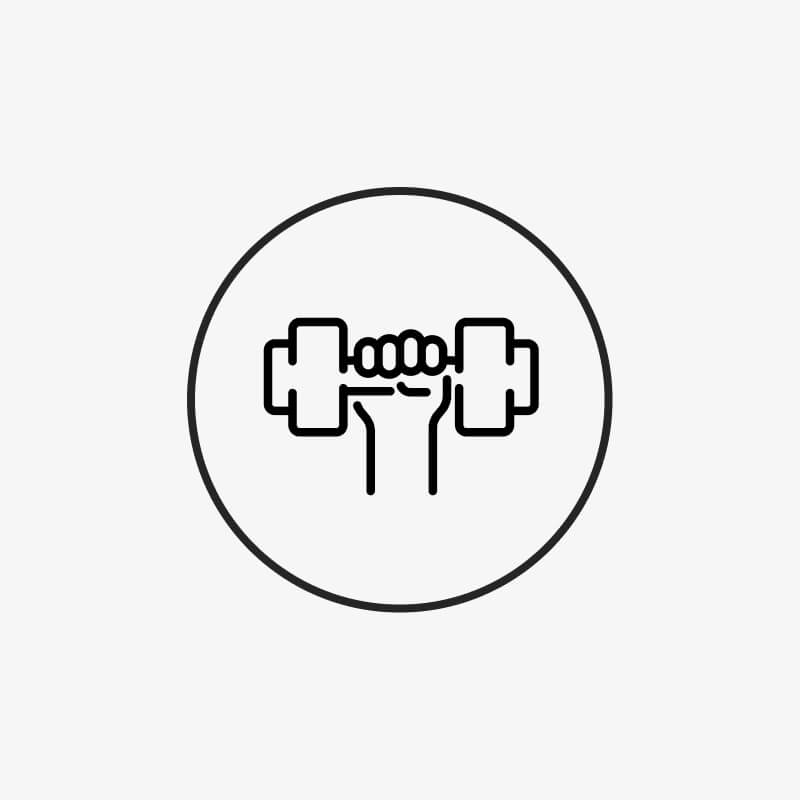It's now widely known that sport—especially for you as a high performer—is the ideal counterbalance to a stressful everyday life. We're only too happy to follow the principle "more is better" and give it our all. But for performance-oriented office athletes and everyday heroes, the same applies: Anyone who always gives their all and wants to consistently surpass themselves must provide their body with sufficient regeneration so it can recover. But what exactly is regeneration? Why is it so important for you? What exactly happens in your body, how can you regenerate efficiently and optimally support your body's adaptation?
Table of contents
1. What is regeneration?
From a scientific perspective, there is a lack of a clear definition for the term regeneration [1]. However, in a medical or biological context, regeneration is generally defined as the "regeneration, emergence, or natural restoration of injured, dead tissue, etc." [2].
When your body recovers from physical exertion, many different processes take place simultaneously. This is because different body systems have different needs to be met. For example, your muscles need nutrients to repair the damage caused during exercise, while simultaneously restoring your circulation and heart rate to normal levels [3]. In addition, after exercise, your body is often lacking minerals, fluids, and other vital substances that are essential for maintaining bodily functions and improving your performance [1].
Take-Home Message #1:
Recovery after exercise is a combination of different processes that take place simultaneously in your body. Different systems in the body are supplied with the nutrients and minerals they require for repair.
Boost your regeneration with RECHARGE
{{widget type="egproducts/list_productbyid2" product_id="506" img_width="250" img_height="335" template="elegento/products/productteaser_by_id_2.phtml"}}
2. Why is regeneration so important?
Especially after an intense training session where you've pushed yourself to your limits, the need for recovery becomes apparent. The feeling of truly having accomplished something takes over. You're thirsty, hungry, and perhaps a little weak. Here and there, the first signs of impending muscle soreness are already making themselves felt. Everything inside you is telling you: your body needs time to recover.
You should not ignore these signs from your body; instead, you should rely on your own subjective perception [1], as psychologist Oliver Faude explains. Especially when training volume and intensity have increased, a long-term imbalance between training and recovery can lead to overtraining or overexertion [4]. Inadequate recovery can result in reduced performance in the long term and even coordination difficulties in the most everyday activities: A well-known symptom of a recovery phase that is too short or inefficient is that controlled walking after intensive exercise becomes difficult and you begin to stagger [ii].
However, regeneration is not only important for preventing negative effects. Rather, it is also essential if you want to increase your performance. Both reports from experienced trainers and the results of sports science show that optimized muscle regeneration allows athletes to train more in the long run. According to Michael Kellmann, a scientist at the University of Bonn and a leading expert in the field of regeneration, who devotes a great deal of time to the topic of regeneration, this can optimally improve athletes' general fitness [...], sport-specific technique, and performance efficiency [4].
Take-Home Message #2:
Your body often sounds the alarm on its own after strenuous physical activity. It's important to listen to your subjective sense of whether your body is ready for another effort. If you don't give your body enough time to rest after exercise, it can lead to overtraining, which can negatively impact both your performance and your well-being.
3. What is supercompensation?
But preventing negative consequences and restoring performance aren't the only good reasons for giving your body the time it deserves. Recovery is also essential for increasing your performance in the long term. The actual training effect only begins during the recovery phase. Your organs, muscles, and musculoskeletal system are often unaccustomed to such stress, so you (strictly speaking) cause damage to your body during exercise. Through the so-called supercompensation, which takes place during the recovery phase, your body can adapt to the previous stress so that it can cope better the next time [5].
Yakovlev's model of supercompensation (1976) is one of the models that is now considered true by various sports scientists as a general training methodology [1]. The model is based on the fact that with the onset of physical activity, the catabolic state sets in, which triggers the fatigue process in your body. During this phase, your body's performance steadily decreases. After the training session, your body then transitions from the catabolic to the anabolic state, where it recovers. The anabolic state manifests itself, for example, in the accumulation of proteins in the micro-tears of the muscles, where they repair the muscles. However, your muscles do not just regenerate to their previous level. Instead, they are repaired beyond this level, which improves your performance [1].
Take-Home Message #3
Supercompensation is your body's adaptation to stress, which increases your body's performance through excessive repair of cells damaged during exercise. However, for this to happen, the body must transition from the catabolic (breaking down) phase to the anabolic (building up) phase. This only happens during recovery, which is why you should definitely give your body the time it needs to recover after exercise.
4. How long does it take your body to recover?
However, it is difficult to determine how long recovery takes: The period depends heavily on your individual predisposition (age, physical condition, health, gender) as well as the type and intensity of the performance. For example, full recovery after intense exertion, such as a triathlon, may not be achieved for several weeks. Other possible limitations, such as stress and individual performance capacity, also play a role. This is because: If you have greater performance capacity, your recovery time is generally shorter [6]. However, it can be stated that recovery that is not supported by active and passive measures can take longer than 72 hours [7].
Take-Home Message #4:
There's no formula that can be used to calculate recovery time in general. It varies greatly depending on the individual, as well as the performance level. However, you can influence recovery time through active and passive measures.
5. Active and passive regeneration
Full regeneration can take some time if you don't support it. However, not all regenerations are created equal—there's a distinction between passive and active regeneration.
Passive regeneration describes measures that can improve the recovery process without physical activity. Targeted nutrition and sufficient, quality sleep are important components of passive regeneration.
The term " active regeneration ," as defined by the Federal Institute of Sports Science, includes all self-performed exercises that you perform to recover immediately after training or competition. This could, for example, be a short cool-down in the form of a jog [8].
Below, we will explain in detail what the active regeneration measures of the cool-down include and show you some other methods – both passive and active – to give you regeneration measures at your fingertips.
Take-Home Message #5:
Regeneration doesn't mean putting your feet up, turning on the TV, and not moving at all. Through active and passive measures, you can significantly accelerate the regeneration process!
6. How can I support regeneration?
Nutrition:
By now, you're probably pretty aware of how important choosing the right foods and eating them at the optimal time is in everyday life. When it comes to nutrition after exercise, in addition to avoiding the wrong foods, it's especially important to consume the right nutrients [9]. The exact composition depends on the sport you practice most frequently. For example, endurance athletes will have different optimal nutritional values than strength athletes, depending on the desired training effect.
Generally speaking, however, it can be said for athletes that micronutrients such as minerals often receive too little attention. Consuming minerals is very important, as you lose a lot of them when you sweat [10]. This is usually due to a magnesium deficiency, as every muscle contraction in the body is magnesium-dependent. Furthermore, magnesium improves the uptake of glucose into the cells and thus accelerates glycolysis [11]. However, muscle cramps can also be the result of a deficiency in another mineral. Too little calcium, potassium, or sodium chloride can also cause them if there is an improper distribution of electrolytes in your body [11].
Furthermore, what has become the norm for strength athletes also applies: Adequate protein intake plays a fundamental role in supercompensation, as it is responsible for replenishing the damaged muscles. Therefore, if you consume too little protein, you have to fear a loss of existing muscle mass. In addition, by consuming protein, you can counteract the feeling of hunger after exercise, as proteins stabilize blood sugar levels [ii] and are therefore a good source of energy [10]. Whey, casein, or soy proteins are particularly suitable as sources of essential amino acids for replenishing your amino acid levels [12].
Of course, carbohydrate intake shouldn't be forgotten in your diet. Whole-grain products are perfect for this, as they also provide the necessary fiber. This, in turn, replenishes the glycogen stores in your organs and muscles, delaying the onset of fatigue during exercise. You can further promote this effect by spreading your carbohydrate intake across six smaller meals a day instead of three large ones [13].
Liquid:
When you exercise, you usually start to sweat, which helps your body regulate its temperature and protect itself from overheating. To promote regeneration, you need to replace the fluids lost during and after exercise [1]. But even then, there are things you need to keep in mind: Water is only partially suitable for rehydration after exercise because it is absorbed relatively slowly and is also low in minerals and nutrients. Fruit juice spritzers (especially after exercise) or glucose-electrolyte solutions, for example in the form of soluble isotonic drinks, are more suitable, as they provide your body with quickly accessible carbohydrates and important minerals that were sweated out along with the water. However, caution is advised here: Only very few of the isotonic drinks available are actually glucose-electrolyte solutions [13].
Tips for nutrition after exercise
Cool down:
If your body is really going and you're on the verge of exhaustion, you shouldn't slow down from 100% to 0%. With a controlled, short cool-down, you can end your HIIT workout much more effectively! The German Federal Institute of Sports Science [8] recommends in its regeneration guide that the performance achieved during a cool-down should be less than 60% of normal performance. Depending on the sport, a short jog, swim, or cycle, or a few careful repetitions of exercises that primarily target the large muscle groups, are recommended. You can also approach a cool-down in a playful way and add a round of in-line skating to your training session [8]. Go wild!
Sleep:
One of the most important measures for regeneration and health is sleep. Because you know: good sleep is the foundation for everything! If you suffer from sleep deprivation, you can notice significant losses in your performance after just a relatively short period of time – and also in your mood [8]! The rules for the best sleep preparation are: 8-10 hours of sleep, no light in the bedroom, a relatively low room temperature, and no drinks like coffee or tea at least four hours before going to bed [7]. If it takes a little longer to fall asleep, a power nap, i.e., a short sleep phase of less than 30 minutes, the next day [8] can also help to recharge your batteries.
Ultimate Guide to Better Sleep
Ice bath:
Certainly a mental challenge, the method of taking an ice bath after exercise is enjoying steadily growing popularity. Its effectiveness has not yet been fully researched. However, it is suspected that the cold counteracts potential inflammation. Furthermore, jumping into cold water after exercise can relieve pain and thus improve the sensation of recovery. 10 minutes at a water temperature of 12–15°C is sufficient for this. Another effect that scientists suspect is behind its popularity is the compression caused by the water pressure [8].
Cold kick? This is how it's done!
Sauna:
Sauna bathing as a regenerative measure is primarily used in endurance sports. This may be due to the increased production of red blood cells, which improves oxygen transport through the veins and can thus delay muscle acidification. However, this is only the result of speculation by sports scientists. Otherwise, there is little evidence to date to support a positive effect of sauna bathing. Either way, it helps prevent infections and strengthens the immune system [8].
Massage:
A massage lasting between 10 and 30 minutes can promote regeneration, treat injuries, and—immediately before exercise—prepare for the upcoming exertion. There are various massage methods you can use specifically to combat muscular tension and inflammation, or even circulatory disorders. This way, the muscles can be protected from premature acidification by the faster removal of lactate, thus maintaining their performance for longer. You can also effectively contribute to regeneration by self-massaging the fascia using a foam roller [8]. Be sure to give it a try!
Stretch:
For fans of active recovery, stretching is one of the more obvious solutions. While stretching isn't universally acclaimed, it does offer a way to prepare the most frequently used muscle groups for passive recovery, increase flexibility, and reduce pain [8].
Stretching exercises after exercise
Take-Home Message #6:
Whether active or passive, there are numerous ways to accelerate recovery. All you have to do is find the right method for you. As long as you feel relaxed, almost anything goes.
Conclusion
You're probably familiar with this: After a strenuous effort, sometimes there's nothing more difficult than getting yourself and your body back into action. But you shouldn't underestimate the importance of recovery. Whether active or passive, the first step is to take it easy, provide your body with the necessary nutrients, and carefully allow time for supercompensation. Sleep also plays a crucial role throughout the entire recovery process.
Do you have trouble sleeping? Are you lacking energy? Do you feel unwell, or do you simply lack concentration at times? Then try our Performance Coach now and get practical tips on how to improve yourself and your performance capabilities!
INDIVIDUAL REFERENCES
[1] Faude, O. (2007) Philosophical Faculties of Saarland University, Germany. Regeneration in competitive sports training: The effects of various regenerative measures during and after intensive training phases in cycling. doi:10.22028/D291-23283. [ https://publikationen.sulb.uni-saarland.de/bitstream/20.500.11880/23339/1/Manuskript_Dissertation_Teil2.pdf ]
[2] Duden (2019) Regeneration . [ https://www.duden.de/rechtschreibung/Regeneration#Bedeutung2 ]
[3] Weinrebe, W. (2011) Haug Verlag in MVS Medizinverlage GmbH & Co. KG, Stuttgart. Nutrition & Medicine 2011; 26 (1): 8-11. Muscles, Movement, and Weight. [ https://www.thieme-connect.com/products/ejournals/html/10.1055/s-0030-1267820 ]
[4] Kellmann, M (2010). Ruhr University, Bochum. Scandinavian Journal of Medicine & Science in Sports. Preventing overtraining in athletes in high‐intensity sports and stress/recovery monitoring . [ https://onlinelibrary.wiley.com/doi/10.1111/j.1600-0838.2010.01192.x ]
[5] Klausmann, HO (2005) LIT Verlag Münster, Germany. Vision Endurance. Holistic endurance program to increase fitness and performance; diagnostics - systematics - regeneration. [ https://books.google.de/books?id=Ta1ZdQQ5kfQC&dq=leistungssteigerung+durch+regeneration&lr=&hl=de&source=gbs_navlinks_s ]
[6] Tomasits, J.; Haber, P. (2016) Springer, Berlin, Heidelberg. Exercise Physiology. Regeneration . [ https://link.springer.com/chapter/10.1007/978-3-662-47260-6_13 ]
[7] Abaïdia, A.-E., McCall, A., Dunpont, G. (2018) Georg Thieme Verlag GmbH, Stuttgart/New York. Sports physio . [ https://www.thieme-connect.com/products/ejournals/html/10.1055/s-0043-123863 ]
[8] Meyer, T.; Ferrauti, A.; Kellmann, M.; Pfeiffer, M. (2016) Federal Institute of Sports Science, Bonn. Regeneration Management in Elite Sport. [ https://cdn.website-editor.net/d5555447e6ba48b0a8192e1228feb07e/files/uploaded/Regeneration_Spitzensport_Mayer_BISP_2016.pdf ]
[9] Hamm, M. (2009) Riva Verlag. The Right Nutrition for Athletes: Optimal Energy for Maximum Performance. [ https://books.google.de/books?id=9RpRAwAAQBAJ&dq=optimale+n%C3%A4hrstoffe+sportart&lr=&hl=de&source=gbs_navlinks_s ]
[10] Gröber, U. (2018) Swiss Journal of Nutritional Medicine, Volume 2, pp. 22-26. Selected Nutrients in Competitive Sports. [ https://www.rosenfluh.ch/media/ernaehrungsmedizin/2018/02/Ausgewaehlte-Naehrstoffe-im-Leistungssport.pdf ]
[11] Predel HG, Weisser B, Latsch J, Schramm T, Hohlfeld A, Randerath O. (2017) German Journal of Sports Medicine, 2017 Vol. 1. Magnesium in ambitious recreational sports – an update. [ https://www.germanjournalsportsmedicine.com/archiv/archiv-2017/heft-1/magnesium-im-ambitionierten-breitensport-ein-update/?L=0 ]
[12] König, D.; Hamm, M.; Dickhuth, H.-H.; Berg, A. (2010) Springer GmbH, Vienna. Sports and Preventive Medicine, October 2010, Volume 40, Issue 3, pp. 7-11. Protein intake in sports - significance for building and maintaining muscular performance. [ https://link.springer.com/article/10.1007/s12534-010-0118-7 ]
[13] Schek, A. (2018) BoD – Books on Demand. Top Nutrition in Sports. [ https://books.google.de/books?hl=de&lr=&id=MGZ7DwAAQBAJ&oi=fnd&pg=PA6&dq=nach+sport+energie&ots=67IpvkcoHu&sig=7X1r_xaVzHTIUkWA90CEOyy0iGk#v=snippet&q=nach%20sport&f=false ]














